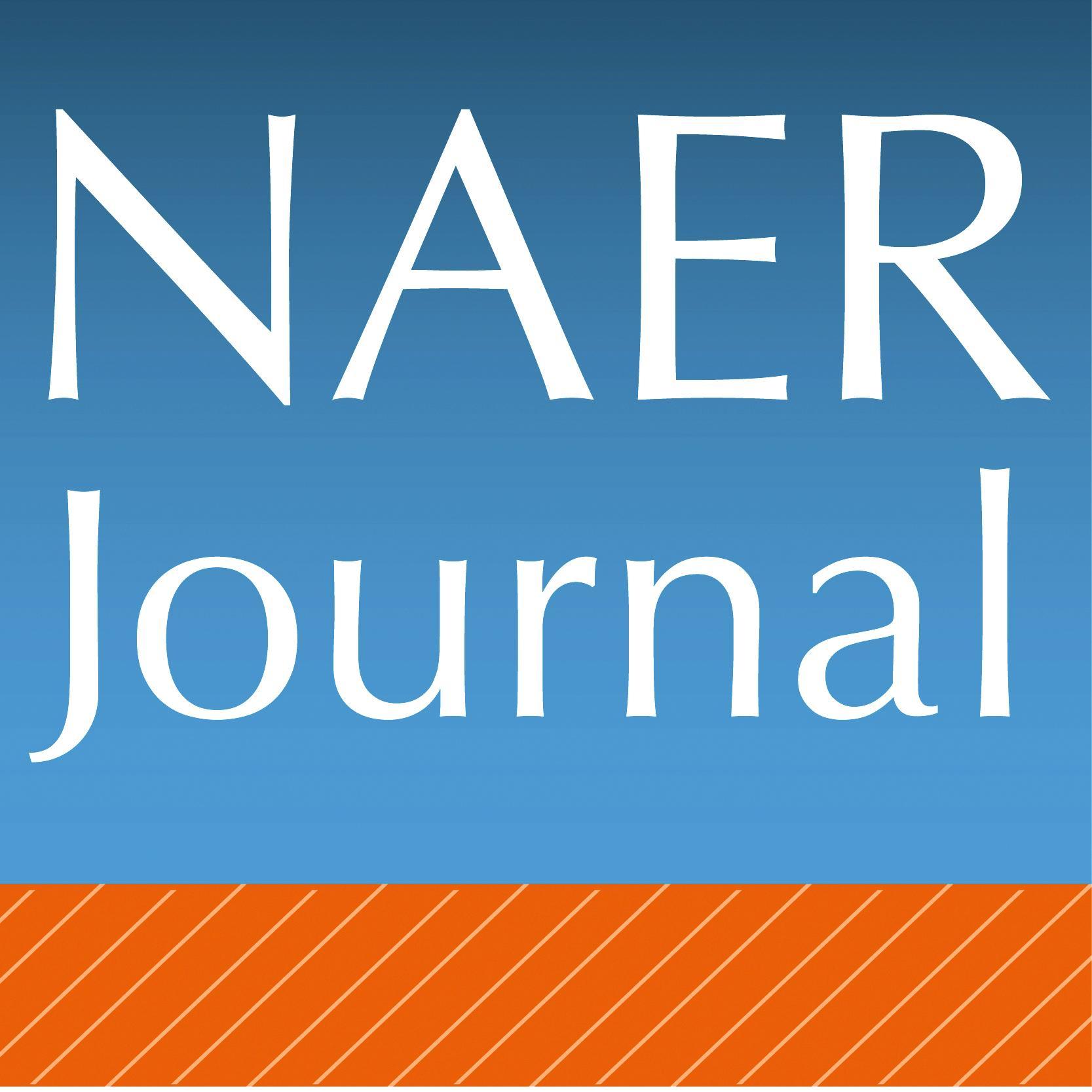Cómo hacer investigación cualitativa en el área de tecnología educativa
Resumen
Aunque en la actualidad nos encontramos en una de las épocas de más amplia difusión de investigaciones, donde la divulgación es casi una obligación en cualquier investigación y, por ende, la mayor parte del público está familiarizado con diferentes metodologías, es frecuente encontrar un gran desconocimiento sobre los preceptos de la investigación cualitativa. En este trabajo hemos tratado de plantear, a modo informativo, aquellas cuestiones básicas que cualquier investigador o investigadora debe conocer antes de adentrarse en el diseño de investigaciones cualitativas. De este modo, empezamos por las principales características de esta metodología de investigación con respecto a la investigación cuantitativa, para adentrarnos en aquellas modalidades más tradicionales y ya básicas, dentro de esta corriente. También se hace un recorrido por aquellas estrategias y procedimientos imprescindibles sobre la recogida de información, cuándo parar de recoger datos, así como la categorización y la triangulación como elementos clave de análisis de los datos. En conclusión, esperamos ofrecer una perspectiva básica sobre la investigación cualitativa, especialmente en el área de la tecnología educativa, donde la tradición de la metodología cuantitativa sigue siendo mayoritaria y esto provoca que la idoneidad de esta modalidad para el estudio de determinados problemas de investigación no se esté aprovechando.
Descargas
-
Resumen4295
-
PDF3239
-
PDF Kindle3239
-
Infografía21
Citas
Barrett, D. y Twycross, A. (2018). Data collection in qualitative research. Evidence Based Nursing, 21(3), 63-64. http://dx.doi.org/10.1136/eb-2018-102939
Bogdan, R. C. y Biklen, S. K. (2007). Qualitative research for education: An introduction to theory and methods (5th Ed.). Pearson.
Bowen, G. A. (2009). Document analysis as a qualitative research method. Qualitative Research Journal, 9(2), 27-40. https://doi.org/10.3316/QRJ0902027
Braun, V. y Clarke, V. (2019). To saturate or not to saturate? Questioning data saturation as a useful concept for thematic analysis and sample-size rationales. Qualitative Research in Sport, Exercise and Health, 13(2), 1–16. https://doi.org/10.1080/2159676x.2019.1704846
Braun, V. y Clarke, V. (2022). Thematic analysis A practical guide. Sage
Bruner, J. (1990). Actos de significado. Más allá de la revolución cognitiva. Madrid
Corbin, J. y Strauss, A. (2008). Basics of qualitative research: Techniques and procedures for developing grounded theory (3rd ed.) Sage.
Berg, B.L. (2001). Qualitative Research, Message for the Social Sciences. Allin and Bacon.
Charmaz, K. (2005). Grounded theory in the 21st century. En Norman K. Denzin y Yvonna S. Lincoln (eds.), The Sage handbook of qualitative research (pp.507-535). Sage.
Cladinin, D. L. y Connelly, F. M. (2000). Narrative inquiry: Experience and story in qualitative research. Jossey-Bass.
Corbin, J. y Strauss, A. (2007). Basics of qualitative research: Techniques and procedures for developing grounded theory. Sage.
Creswell, J. W., y Miller, D. L. (2000). Determining validity in qualitative inquiry. Theory into Practice, 39(3), 124-131.
Creswell, J. W. (2008). Educational Research: Planning, Conducting, and Evaluating Quantitative and Qualitative Research. Pearson/Merrill Prentice Hall.
Creswell, J. W. (2013). Qualitative Inquiry and Research Design: Choosing Among Five Approaches. SAGE Publications.
Denzin, N. K. y Lincoln, Y. S. (2005a). The Sage handbook of qualitative research (3rd ed.). Sage.
Denzin, N. K. (1970). The research act: A theoretical introduction to sociological methods. Aldine Publishing Company.
Denzin, N. K. (1989). The research act. Prentice Hall.
Denzin, N. K. (2009). The elephant in the living room: or extending the conversation about the politics of evidence. Qualitative Research, 9(2), 139–160. doi: https://doi.org/10.1177/1468794108098034
Denzin, N. K. (2017). Critical qualitative inquiry. Qualitative Inquiry, 23(1), 8- 16. https://doi.org/10.1177/1077800416681864
Dey, I. (1993). Qualitative Data Analysis. A Usar-Friendly Guide for Social Scientists. Routledge.
Elliott, J. (1990). La investigación-acción en educación. Morata.
Emerson, R. M., Fretz, R.I. y Shaw, L. (2001). Participant observation and fieldnotes. In Atkinson P., Coffey A., Delamont S., Lofland J. y Lofland L. (eds.) Handbook of Ethnography (pp. 352-368). Sage.Erickson, F. (1973). WHAT MAKES SCHOOL ETHNOGRAPHY “ETHNOGRAPHIC?” Council on Anthropology and Education Newsletter, 4(2), 10-19. https://doi.org/10.1525/aeq.1973.4.2.05x0129y
Erickson, F. (1986). Qualitative methods in research on teaching. In M. C. Wittrock (Ed.), Handbook of research on teaching (3rd ed., pp. 119-161). Macmillan.
Ezzy, D. (2002). Qualitative Analysis: Practice and Innovation. Routledge.
Fernández Navas, M., Alcaraz Salarirche, N., Pérez Granados, L., y Postigo Fuentes, A. Y. (2020). Is Qualitative Research in Education Being Lost in Spain? Analysis and Reflections on the Problems Arising from Generating Knowledge Hegemonically. The Qualitative Report, 25(6), 1555-1578. https://doi.org/10.46743/2160-3715/2020.4374
Fernández Navas, M., Alcaraz Salarirche, N. y Pérez Granados, L. (2021). Estado y problemas de la investigación cualitativa en educación: divulgación, investigación y acceso del profesorado universitario. Archivos Analíticos de Política Educativas, 29(46), 1555-1578. https://doi.org/10.14507/epaa.29.4964
Fernández Navas, M., Alcaraz Salarirche, N. y Pérez Granados, L. (2022). “El papel de la evaluación formativa en la Lesson Study. Vestigios de una experiencia”. En A. I. Pérez Gómez y E. Soto Gómez (Coords.) Lesson Study: Aprender a enseñar para enseñar a aprender (pp. 329-346). Ediciones Morata.
Flyvbjerg, B. (2011). Case Study. In N. K. Denzin e Y. S. Lincoln (Eds.), The Sage Handbook of Qualitative Research (1st ed., pp. 301-316). SAGE Publications.
Freitas, H., Oliveira, M., Jenkins, M. y Popjoy, O. (1998). The focus group, a qualitative research method: reviewing the theory, and providing guidelines to its planning, 1-22. ISRC. Merrick School of Business, University of Baltimore.
Fuller, J. M. (2000). Changing perspectives on data: Interviews as situated speech. American Speech, 75(4), 388-390. https://doi.org/10.1215/00031283-75-4-388
Gorman, G. E., y Clayton, P. (2005). Qualitative research for the information professional. Facet.
Glaser, B.G. y Strauss, A. L. (1967). The Discovery of Grounded Theory: Strategies for Qualitative Research. Aldine.
Hammersley, M. y Atkinson, P. (2007). Ethnography: Principles in Practice. Routledge.
Johnson, R. B. y Christensen, L. B. (2004). Educational research: Quantitative, qualitative, and mixed approaches. Allyn and Bacon.
Jorrín, I., Fontana, M. y Rubia Avi, B. (2021). Investigar en educación. Editorial Síntesis.
Julien, g., y Dookwah, R. (2020). Students transition from face to face learning to online learning at higher education: A case study in Trinidad and Tobago. Educational Research and Reviews, 15(8), 487-494. https://doi.org/10.5897/ERR2020.4005
Kemmis, S. y McTaggart, R. (2005). Participatory Action Research: Communicative Action and the Public Sphere. In N. K. Denzin e Y. S. Lincoln (Eds.), The Sage handbook of qualitative research, 559–603.
Korstjens, I. y Moser, A. (2017). Series: Practical guidance to qualitative research. Part 4: Trustworthiness and publishing. European Journal of General Practice, 24(1), 120-124. https://doi.org/10.1080/13814788.2017.1375092
Krueger, R. A. (2000). Focus groups: A practical guide for applied research. Sage.
Krueger, R. A y Casey, M. A. (2015). Focus groups: A practical guide for applied reserchers (5ªed.). Sage.
Lincoln, Y. y Guba, E. (1985). Naturalistic Inquiry. Sage.
Lincoln,Y.S. y Guba, E.G. (2000). Paradigmatic controversies, contradictions, and emerging confluences. In N. K. Denzin an Y.S. Lincoln (Eds.), The Handbook of qualitative research (pp. 1065-1122). Sage Publications.
Malterud, K., Siersma, V. D. y Guassora, A. D. (2015). Sample Size in Qualitative Interview Studies: Guided by Information Power. Qualitative Health Research, 8. https://doi.org/10.1177/1049732315617444
Maxwell, J. A. (2010). Using Numbers in Qualitative Research. Qualitative Inquiry, 16(6), 475–482. https://doi.org/10.1177/1077800410364740
Maxwell, J. A. (2012). Qualitative Research Design. An Interactive Approach. Sage Textbooks. Serie: Applied Social Research Methods, no. 41.Sage
Maxwell, J. (2019). Diseño de investigación cualitativa. Gedisa.
Maxwell, J. A. (2020). Why qualitative methods are necessary for generalization. Qualitative Psychology. https://doi.org/10.1037/qup0000173
Miles, M. B., y Huberman, A. M. (1994). Qualitative data analysis: An expanded sourcebook (2nd ed.). Sage.
Mohr, L. B. (1982). Explaining organizational behavior. Jossey-Bass.
Morgan, D. L. (1996). The Focus group guidebook. Sage.
Morgan, D. L. (1997). Focus groups as qualitative research (2ª ed.). Sage.
Scott, J. (1990). A Matter of Record: Documentary Sources in social Research. Polity Press.
Moustakas, C. (1994). Phenomenological research methods. SAGE Publications, Inc., https://dx.doi.org/10.4135/9781412995658
Pérez Gómez, Á.I. (2000). La cultura escolar en la sociedad neoliberal. Morata.
Pérez Granados, L., Alcaraz Salarirche, N., Fernández Navas, M. y Postigo Fuentes, A. Y. (2022). Action research through lesson study: A space for learning in initial teacher training. Educational Action Research, 30(3), 1-18. https://doi.org/10.1080/09650792.2022.2108473
Pole, C. y Morrison, M. (2003). Ethnography For Education. McGraw-Hill Education.
Postigo Fuentes, A. Y. (2021). Aprendizaje de una lengua extranjera en una liga de esports amateur. Un estudio de caso. [Universidad de Málaga]. https://hdl.handle.net/10630/22920
Roller, M., y Lavrakas, P. J. (2015). Applied Qualitative Research Design A Total Quality Framework Approach. Guilford Press.
Sagor, R. (2000). Guiding School Improvement with Action Research. Association for Supervision and Curriculum Development.
Santos Guerra, M. A. (2005). Hacer visible lo cotidiano. Teoría y práctica de la evaluación cualitativa de los centros escolares. Akal.
Spradley, J. P. (1980). Participant Observation. Holt, Rinehart and Winston.
Schwandt, T. (2007). The SAGE Dictionary of Qualitative Inquiry. SAGE Publications, Inc. https://doi.org/10.4135/9781412986281
Stake, R. F. (2010). Investigación de estudios de casos. Morata.
Strauss, A. (1987). Qualitative analysis for social scientists. Cambridge University Press.
Strauss, A., y Corbin, J. (1990). Basics of qualitative research: Grounded theory procedures and techniques. Sage.
Taylor, S. J. y Bogdan, R. (1996). Introducción a los métodos cualitativos de investigación. Paidós.
Tracy, S. (2021). Calidad cualitativa: ocho pilares para una investigación cualitativa de calidad. Márgenes Revista De Educación De La Universidad De Málaga, 2(2), 173-201. https://doi.org/10.24310/mgnmar.v2i2.12937
Velasco, V., y Díaz de Rada, A. (1997). La lógica de la investigación etnográfica. Un modelo de trabajo para etnógrafos de la escuela. Trotta
Derechos de autor 2022 Manuel Fernández Navas, Ana Yara Postigo-Fuentes, Laura Pérez Granados, Noelia Alcaraz Salarirche

Esta obra está bajo una licencia internacional Creative Commons Atribución-NoComercial-CompartirIgual 4.0.
Aquellos autores que tengan publicaciones con esta revista aceptan los términos siguientes :
-
Los autores conservarán sus derechos de autor y garantizarán a la revista el derecho de primera publicación de su obra, el cuál estará simultáneamente sujeto a la Licencia Creative Commons Atribución no comercial compartir por igual 4.0 Internacional que permite compartir, copiar y redistribuir el material en cualquier medio o formato y adaptar, remezclar, transformar y construir sobre el material en los siguientes términos:
Reconocimiento - Debe dar el crédito apropiado, proporcionar un enlace a la licencia, e indicar si se han realizado cambios. Puede hacerlo de cualquier manera razonable, pero no de una manera que sugiere que el licenciante o su uso hace suya. No comercial - No puede utilizar el material con fines comerciales. Compartir bajo la misma - Si remezcla, transformar o crear sobre el material, se debe distribuir sus contribuciones bajo la misma licencia que el original. -
Los autores podrán adoptar otros acuerdos de licencia no exclusiva de distribución de la versión de la obra publicada (p. ej.: depositarla en un archivo telemático institucional o publicarla en un volumen monográfico) siempre que se indique la publicación inicial en esta revista.
-
Se permite y recomienda a los autores difundir su obra a través de Internet (p. ej.: en archivos telemáticos institucionales o en su página web) antes y durante el proceso de envío, lo cual puede producir intercambios interesantes y aumentar las citas de la obra publicada. (Véase El efecto del acceso abierto).
-
En cualquier caso, el Equipo Editorial entiende que las opiniones vertidas por los autores son de su exclusiva responsabilidad.
















